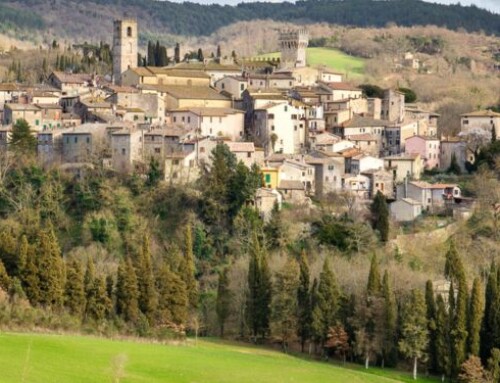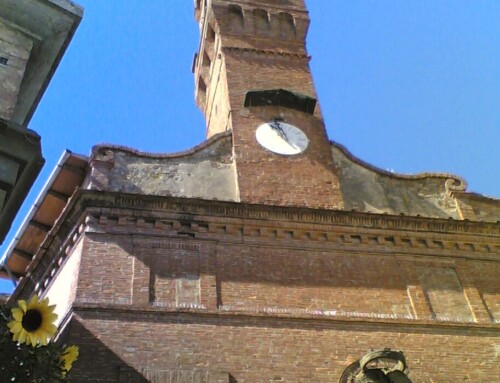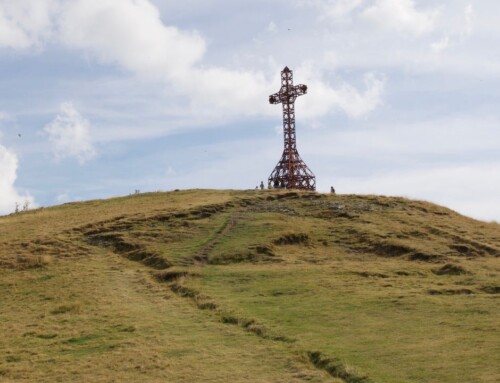What to See in Arezzo – a brief guide
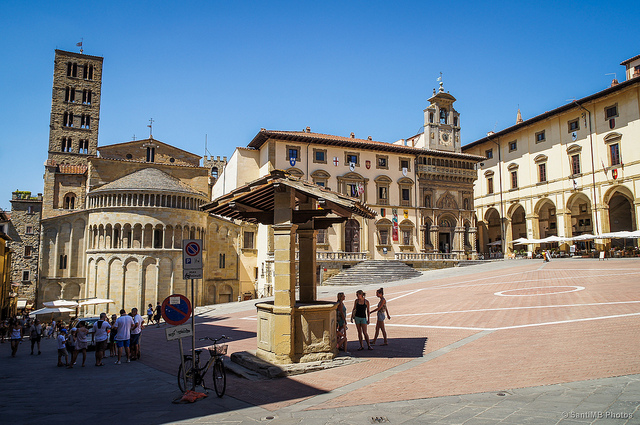
Arezzo, with its charming medieval old town, offers a unique experience of art, entertainment and relaxation. This city of art, inhabited since the Etruscans, is surrounded by valleys such as the Valdarno, Casentino and Val di Chiana, as well as the Valtiberina, which is crossed by the Tiber River. Among the must-see sites are the medieval walls, the 13th-century Buriano Bridge and the Medici Fortress. Arezzo also boasts a Gothic Cathedral with works by Piero della Francesca. The city, rich in historic buildings such as the Palazzo Comunale and green spaces, holds cultural events such as the Saracino Joust and the Antiques Fair, making it a must-see destination for those visiting Tuscany.
Tuscany is a beautiful region that offers many wonderful cities and cultural itineraries to visit. The countryside, monuments, museums, typical dishes and wine are the major beauties and peculiarities that you will be able to find and appreciate in this charming area.
Among the cities not to be missed there is certainly Arezzo with its atmosphere, history and medieval old town: a mix of art, entertainment and relaxation from which you can get completely coivolated.
So to the question “Arezzo, what to see?“, I will answer you in detail and recommend the best tourist itinerary that will allow you to get to know this city in all its facets.
The City Of Arezzo
Starting with the main information, it is only right that you know a little history and some valuable trivia that can accompany you in your discovery of this capital of Tuscany.
Arezzo is a true city of art that overwhelms with its very ancient history and for the passage of numerous cultures within the territory.
In fact, when asked the question Arezzo what to see, one cannot help but answer as the first thing: the medieval walls. The latter are very striking and fascinating, and you can easily find them in many parts of the city.
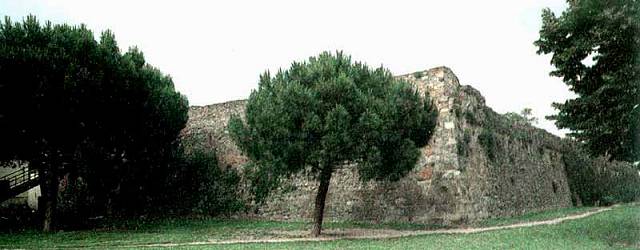
Arezzo What to See: Medieval Walls
There are about a hundred thousand inhabitants who reside in this Tuscan capital, set on a hill that gives a magnificent panorama and an expanse of green that surrounds it: the Valdarno, Casentino and the Val di Chiana.
These three are the valleys that fill the province of Arezzo and are joined by Ponte Buriano, a 13th-century bridge that crosses the Arno and takes visitors to the area across the river.
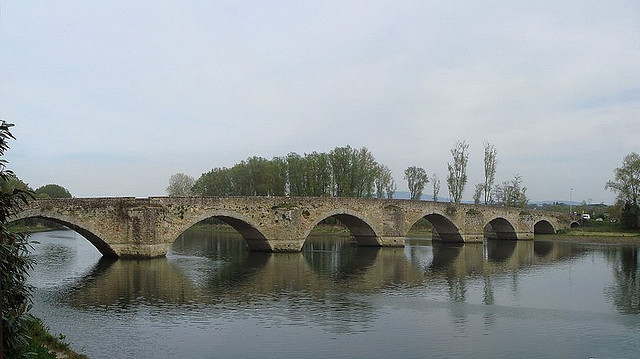
Arezzo What to See: Ponte Buriano
In addition to these three, there is another valley that is part of the Arezzo area and is crossed by the Tiber: This one is called Valtiberina.
At the highest part of the hill on which the city stands, you can find two places in Arezzo what to see that we will discuss in detail later: the Medicean Fortress and the Palazzo Comunale.
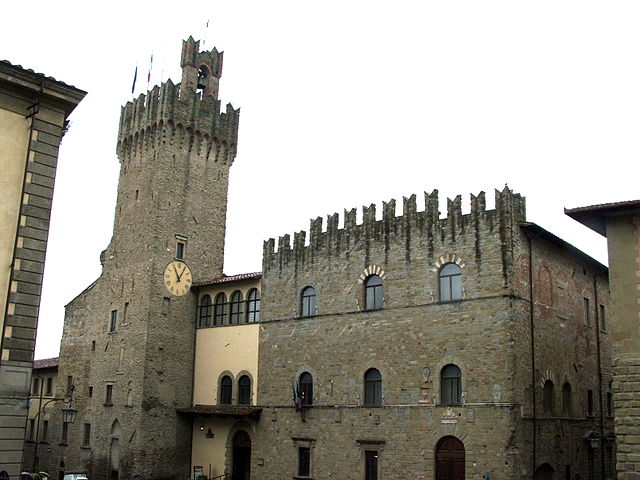
Arezzo What to See: Palazzo Comunale
Slightly elevated from the other two buildings you’ll be able to find the Gothic-style Cathedral, which rises thanks to its tall bell tower.
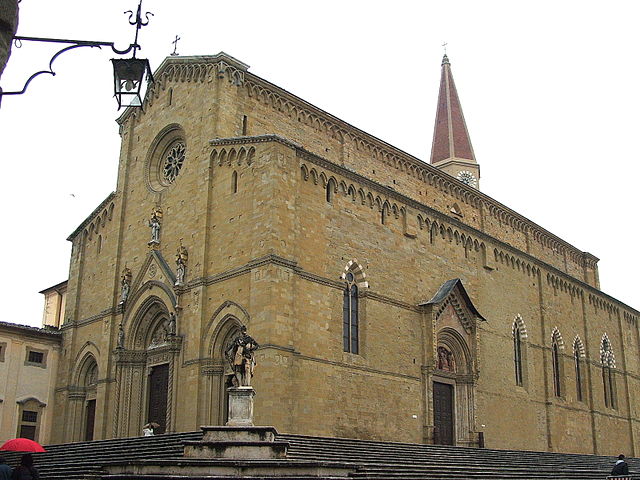
Arezzo What to See: Cathedral
Arezzo What To See: A Bit Of History
Arezzo is ancient, even more so than Alexandria. In fact, it was lived in and inhabited by the Etruscans and, consequently, also by the Romans. It was a center of excellent economic activities, especially for the foundries and factories that built the red “coral vessels.”
In spite of everything, Arezzo is a city where what you will notice most will be the medieval atmosphere and the touch of the Etruscans, which will take you back in time especially when you find yourself visiting the Ghibelline part or the ruins located in many areas of the Arezzo province.
In 1384, Arezzo became part of the Medici Grand Duchy and, therefore, the city was under the rule of Florence. This phase of history led the city to flaunt an even more valuable heritage, both culturally and environmentally.
History also tells you about the beauties of Arezzo, such as the frescoes in the cathedral created by Piero della Francesca during one of his brief trips to this capital city.
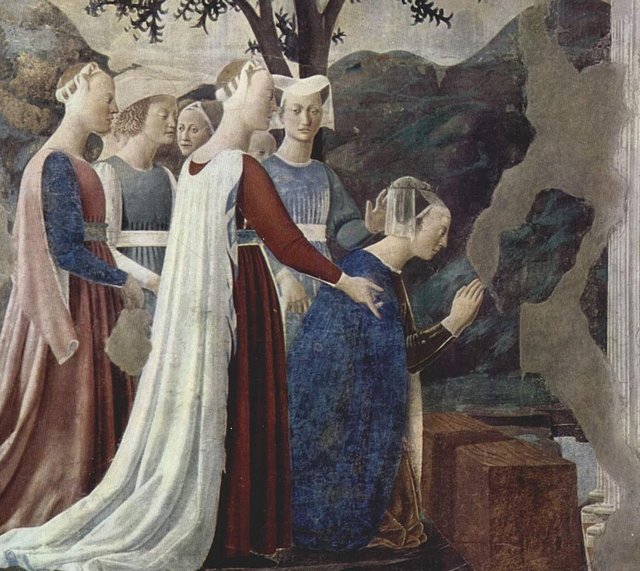
Adoration of the Cross – Piero della Francesca
The entire historic center is a continuous exhibition of this city’s history: from the medieval towers to the Vasariano Loggia, from the Pieve di Santa Maria to the Palazzo della Fraternità dei Laici and the Basilica of San Domenico.
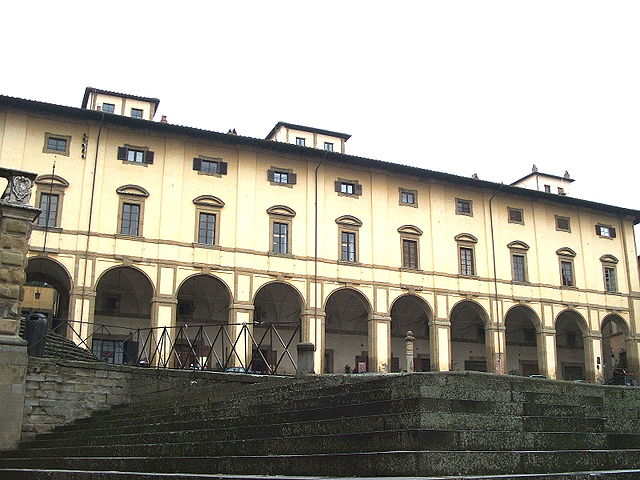
Loggia del Vasari
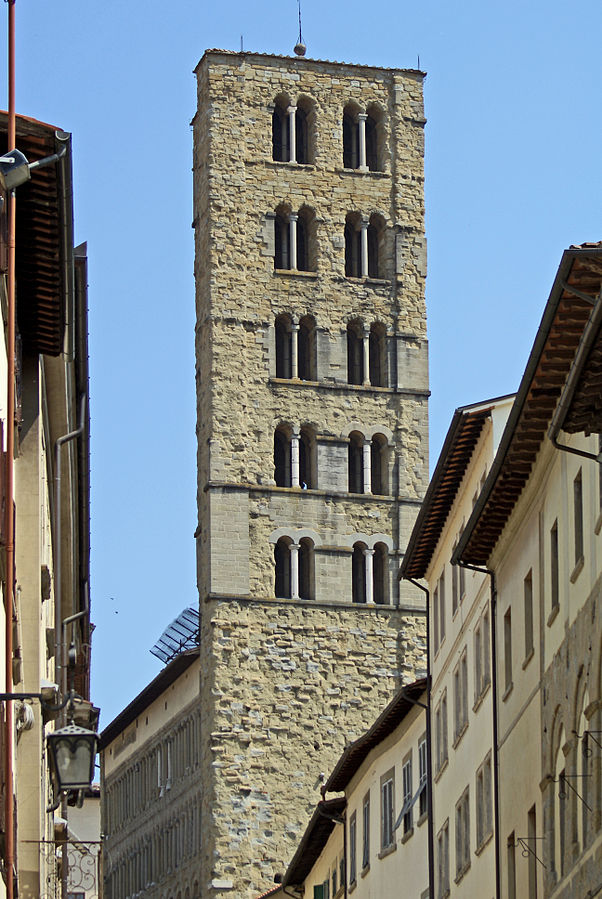
Santa Maria della Pieve
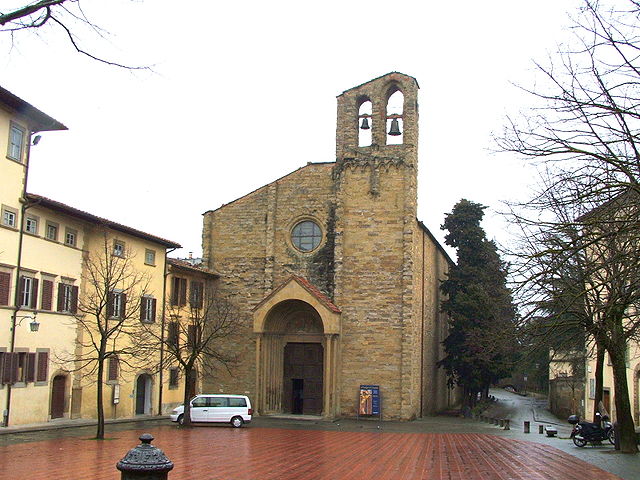
Basilica of San Domenico
The architectural style is predominantly Gothic and is one of the major peculiarities that will allow you to appreciate your entire itinerary.
However, although there have been archaeological findings related to the prehistoric period, the Etruscans were the people who left the greatest marks within the city and, in fact, there is a route that can guide you to discover the most beautiful ruins and remains that are part of the best historical and cultural attractions in Arezzo.
How to Reach Arezzo
Of course, before specifically answering the question “Arezzo what to see?”, I will explain how to get to this Tuscan capital.
The solutions are many and, if you wish to reach the city by car, usually the best route is to take the A1 Milan-Naples highway from Rome or Florence. Once you exit at Arezzo, you will find yourself in the center in a few minutes.
If you prefer highways, you’ll have to take the SS 73 from Siena, Grosseto, or the Val di Chiana; the SS 69 from Pontassieve, Figline and Incisa Valdarno, or Montevarchi; or the SS 71 from Cortona, Perugia, the Lake Trasimeno area, Casentino, Forlì, Stia, and the Val di Chiana.
You can also get there by train as the town is well served, and the station is precisely on the railway line connecting Bologna and Rome.
If you prefer travel by bus, know that even in this eventuality you can find numerous solutions thanks to the Sita, the ATAM and the LFI.
Arezzo What to See: Cultural Attractions Not to Be Missed
To tell you exactly everything you need to know about Arezzo What to See, I’ll start with a big event. In fact, every late June and early September, the Saracen Joust is held in Piazza Grande.
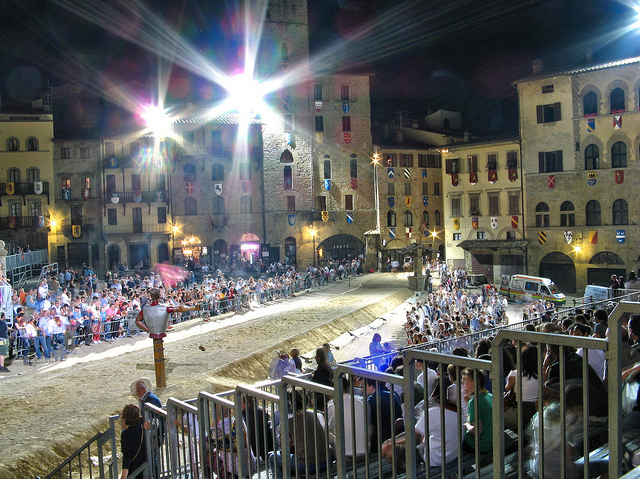
Arezzo What to See: The Saracen Joust
This is an evocative performance that will allow you to watch medieval tournaments just as they used to be held.
Also in Piazza Grande, on the first weekend of each month you can visit the Fiera Antiquaria, with many stalls and typical objects from that you can take home as souvenirs.
As I told you earlier, most of the cultural attractions that fall under “Arezzo what to see” are right on the highest part of the hill where the city center resides.
So I recommend visiting the Medici Fortress, which will show you what was the architectural style of military constructions dating back to the 16th century.
Also the Palazzo Comunale, whose name is “Palazzo dei Priori,” is a great example of architecture from the 1300s characterized by the decorative battlements, and the slight touch of restyling dating from the 1900s.
Continuing on your itinerary to discover every corner of Arezzo what to see, I also recommend visiting the Church of St. Francis, a basilica that has undergone various changes over time: in the 1300s it was clad in the Gothic style and in the early 1900s it was restored without altering its distinctive architecture.
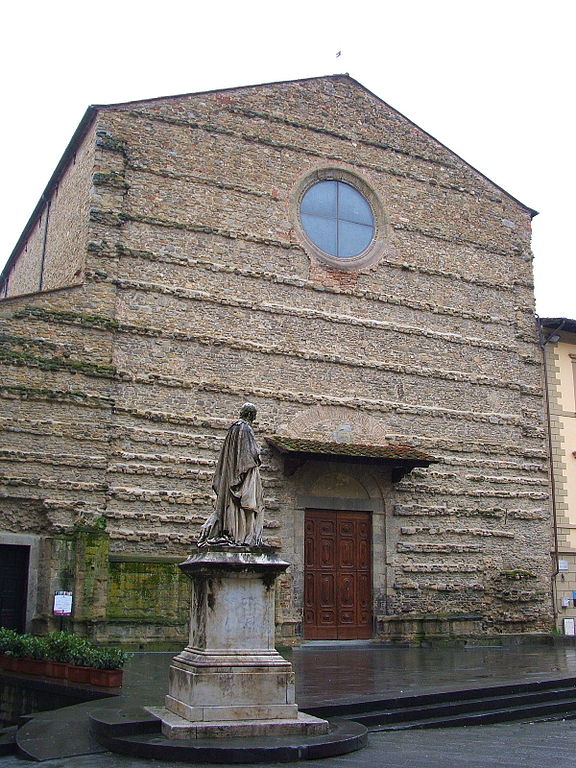
Arezzo What to See: Basilica of San Francesco
Inside the Basilica you’ll notice the precious nave made up of intricately crafted trusses, and the frescoes by Piero della Francesca that were recently restored.
The Romanesque Pieve di S.Maria will also be able to show you how the Gothic style intersects perfectly with the changes made in the 1500s and how the imposing tower of the “hundred holes,” built in 1330, is characterized by a precise combination of mullioned windows.
Another Gothic and neo-Gothic structure that I suggest you do not miss is, of course, the Duomo. The latter, built over two centuries, features a three-nave interior, large pillars and countless frescoes by Piero della Francesca, but also works by French artist Guillaume de Marcillat.
Other buildings and monuments that are part of the Arezzo what to see itinerary include the late 13th century building, S.Domenico, and the Renaissance church of SS. Annunziata, also known as “of the Madonna of Tears.”
The “Boarding School of St. Catherine”is also a structure not to be underestimated. In fact, looking at it you will be able to notice the unmistakable style of Vasari, who, years after the building was built, made some changes characteristic of his time.
Arezzo What to See: The Etruscan Itinerary
When I was briefly telling you about some of the basic steps in the history that characterizes the city of Arezzo, precisely one of the twelve famous lacumonies of Etruria, I told you that the influence of the Etruscans is very visible in the Arezzo area.
For this reason, in your Etruscan itinerary can not miss visits to the shrines that guard precious bronzes such as the “Chimera”, and the necropolis dating back to the sixth century BC located in the neighborhood of Poggio del Sole.
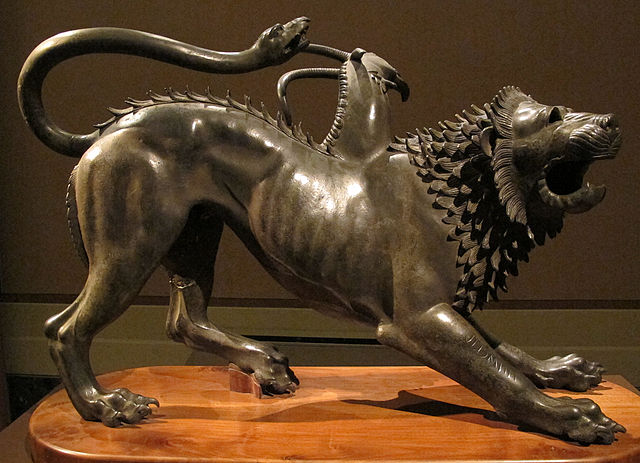
Chimera of Arezzo
You should also know that during the period of the 6th century B.C., some of the walls were built, and during this construction, some important remains of the Etruscan civilization were found (which you can observe in the small square of St. Nicholas).
The whole historical center is marked by the imprint of this people: from the structures of viale Buozzi to the terracotta artifacts of the finds in via Roma and the area of S. Croce, from the black pottery artifacts to the wonderful sanctuary (presumably from the 2nd century BC) located in the area of S. Cornelio-Castelsecco.
However, to take a trip inside this civilization in a complete and more orderly manner, I recommend that you first visit the National Archaeological Museum “Gaio Cilnio Maecenas” located within the walls of the former monastery of St. Bernard.
In this facility you can observe interesting artifacts such as the Amphora of Meidias, a colorful decoration made on a slab and taken from an ancient temple in the city, and numerous busts carved in stone.
Once you leave the Archaeological Museum, you can pass by the Piazzetta di S. Niccolò where you can find some remains of Etruscan walls.
You will also know that, in the area where the Duomo and the Fortress are located today, once stood the ancient Etruscan city, and, precisely in Viale Buozzi, you will be able to see some remains of an old temple from the 2nd century BC.
Finally, in the area of S. Cornelio and Castelsecco, a short distance from the historic center of Arezzo, you can visit the ruins of an old theater (built prior to the 2nd century BC) that allowed you to monitor the Valtiberina.
Arezzo What To See: The Museums And Places To Visit In The Immediate Neighborhood
Continuing the journey inside the city, among the main cultural attractions of Arezzo what to see, know that you can find many other museums besides the archaeological one.
One of these is located within the walls of the Bruni-Ciocchi Palace, and it is the “Museo Statale d’Arte Medievale e Moderna“: a meeting of ancient and more modern works of art, donated by collectors in the area.
I also recommend that you do not miss the “Museo e Archivio Vasariano,” built inside the house purchased in 1540 by Giorgio Vasari himself, in which you can admire a number of very fascinating works.
Getting out of town a bit, you can find other museums and exhibitions such as: the permanent exhibition “Casentino Archeologico – Dalla Preistoria al Periodo Romano” (Località Partina), the Museo Archeologico e Paleontologico and the Museo dell’Accademia Etrusca in Cortona, the Museo Civico di Sansepolcro and the Museo Comunale di Lucignano.
Among other places to include in your Arezzo what to see itinerary, I suggest the Val di Chiana. In this case it is not museums, but a beautiful valley full of cattle farms that might be fun to visit.
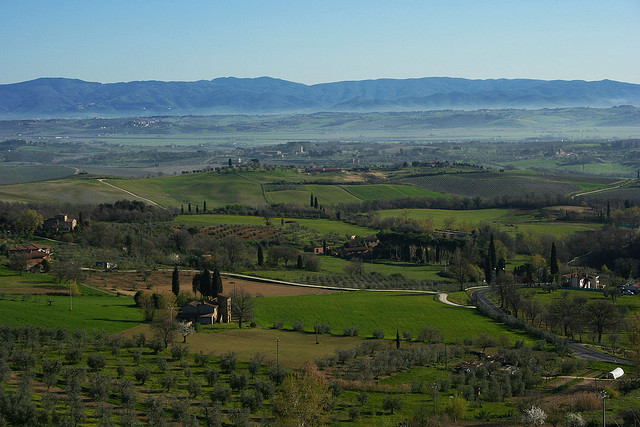
Val Di Chiana
Also in this valley you can visit other evocative ruins, such as the Etruscan “chambered” tombs of Camucia and Sodo.
Other areas not to be missed from the archaeological point of view are those of Cortona, Foiano, Farneta, Cignano, Monte San Savino and Castiglion Fiorentino: good examples that confirm the presence of the Etruscan people in the valley.
Where to Eat in Arezzo
After visiting all the best places in Arezzo, you will surely need some tips for eating well and being able to taste typical Arezzo dishes.
In this regard, know that many tourists who have visited this city, really liked the restaurant “Antico posto di Ristoro“.
This is an atmospheric venue built in a structure that, in 1912, was a postal station connecting Arezzo with the entire Valtiberina area.
So, what were stables for horses have been transformed into a large but simple restaurant, where you can taste the various typical and traditional dishes of the province of Arezzo.
If you are looking for taste and tradition, the restaurant “Dal Moro” will also be able to offer you the various cold cuts and cheeses of Tuscany, Chianina beef steaks, lampredotto, porchetta and truffle dishes.
In alterative, I recommend the places “Logge Vasari” and “La Lancia d’oro” which are located in Piazza Grande and can let you taste all the typical dishes of Tuscan cuisine.
Finally, to conclude your journey into the past proposed by this beautiful city, you could also dine or have lunch at “La Corte dell’Oca“. At the latter place you can find yourself in a 1950s atmosphere and enjoy various local dishes.
Photo credits:.
1) Buscando la sombra => SantiMB.Photos
2) AREZZO (Medici fortress) => MondiMedievali.net
3) Buriano Bridge 01 => Monica Arellano-Ongpin
4) The Communal Palace in Arezzo => Wikipedia
5) Cathedral of Arezzo => Wikipedia
6) Adoration of the Cross (detail) => Wikipedia
7) The Vasari Loggia on Piazza Grande => Wikipedia
8) Church of San Domenico. => Wikipedia
9) Santa Maria della Pieve => Wikipedia
10) Arezzo and the Saracen Joust => Ondablv
11) Arezzo-Basilica of San Francesco => Wikimedia
12) Chimera of Arezzo => Wikipedia
13) on the chiana valley => Fabio Vanni
14) Fiorentina => pierpeter
[:]



